Explanation of the marking of washing machines Bosch
 Arriving at the store for a new Bosch washing machine, buyers are interested in acquiring a model that is assembled in Germany, or, in extreme cases, in the EU. Why? Yes, because the build quality of the "Europeans" is much higher. Sellers can "slip" under the guise of German technology a machine assembled in China or even in Russia. Is it possible to recognize fraud right there in the store? Of course you can, marking the Bosch washing machine will help us. If you read it correctly, you can get all the necessary information, so let's learn how to read it.
Arriving at the store for a new Bosch washing machine, buyers are interested in acquiring a model that is assembled in Germany, or, in extreme cases, in the EU. Why? Yes, because the build quality of the "Europeans" is much higher. Sellers can "slip" under the guise of German technology a machine assembled in China or even in Russia. Is it possible to recognize fraud right there in the store? Of course you can, marking the Bosch washing machine will help us. If you read it correctly, you can get all the necessary information, so let's learn how to read it.
Assembly Countries
First of all, let's learn to recognize the parts of the marking that tell us about the country of assembly of the Bosch washer. The origin of the washing machine can be determined primarily by the letter index, which can be found at the end of the marking of a particular model.
- OE - tells us that the machine was made in Russia, Belarus or Ukraine.

- EE - This index indicates that the machine was assembled in Spain.
- BY - tells us that Bosch washer was made in Eastern Europe.
- GB - this index tells us that the Bosch machine was assembled in the UK.
- EU - this index indicates that the washing machine was manufactured in Eastern or Western Europe.
What this or that index prefix means is very important, but you need to understand that not all designations have such prefixes. Moreover, the country of origin cannot be precisely determined by the index. The three-digit letter code at the very beginning of the marking will help you do this with a specific Bosch washing machine. Let's give specific examples.
- WAS - means that this model is assembled in Germany.
- WLX - these cars are also assembled in Germany.
- WAE - this code indicates cars made in Poland or Turkey, except for the model with the WAE28441 marking, it is assembled in Germany.
- WLF - in most cases, this code indicates a vehicle assembled in Germany, if the number code ends with 4 or 5 - in China.
- WAA - this is the designation made in Turkey.
- WOT - Bosch cars from France.
- WOR - this equipment is assembled in Poland.
- WFX is an old designation that gives out washing machines assembled in Poland.
- WLM - code issuing Chinese technology.
The above codes indicate the most different washing techniques from Bosch: narrow, full-size, with vertical and front loading.
General decoding of different models
Deciphering the marking can reveal to us much more than just the country of origin of the Bosch machine. If we decipher the marking correctly, we will learn about the main parameters of a particular model without even looking at its instructions. Let's start with the signs indicating that the washer belongs to a particular series. Today, Bosch produces several lines of washing machines: 2 Classixx, 4 Maxx, 6 Avantixx, 8 Logixx, etc.
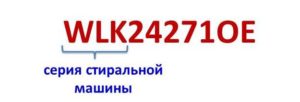
There are rulers that are indicated by a group of alphabetic characters. We decided to draw your attention to them.
- WAE - this code indicates the standard Maxx 6 with or without a display.
- WLX - with this code, the manufacturer designates Maxx 5 with a narrow case and a display (in some cases there is no display).
- WFR - This three-digit code indicates a full-size Bosch Maxx Comfort washer with front-loading and a good display.
- WAA - after seeing this code, we should know that we have a Classixx 5 washing machine with a display.
- WFX is the standard Maxx Advantage with a great display.
- WOT, WOR - and these codes, as you may have guessed, indicate Bosch washers with vertical loading.
- WFCX - This rare four-digit code points to the Maxx Advantage with a custom narrow body and screen.
We have given quite a few examples, but so far not a single marking has yet been fully disclosed.The time has come, from disparate examples to move to practical decryption. Let's take a closer look at the Bosch WLT20271OE washing machine.
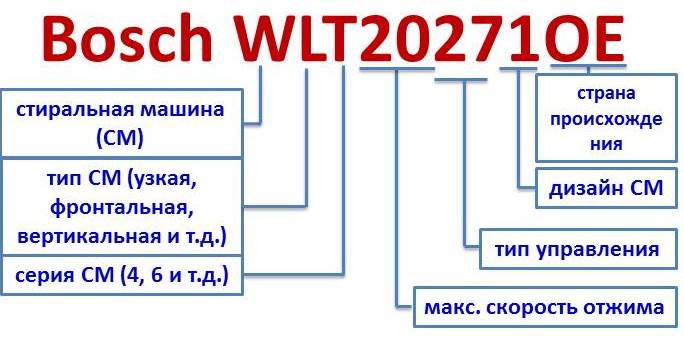
The first letter of the marking is constantly repeated. What model do not take, it will begin with W. Why so? Yes, because W is the washing machine. The second letter will depend on the type of washing unit that we have to deal with. In our case, this is the letter L, but the letters O, A, K or I can be used:
- L - a washer with a narrow case of 45 cm with horizontal loading;
- I - built-in horizontal loading machine;
- O - a washing machine with a vertical load;
- A - a machine that has a depth of 60 cm and horizontal loading;
- K - this washing machine is capable of drying clothes.
The third letter of the marking indicates the series to which the particular model belongs. So that you understand what this means, let's give specific examples. In our case, this is the letter T, but it can be K, G, H, S, W or Y.
- The letters K or T indicate that the model belongs to the 6th series.
- The letters G or H indicate that the machine belongs to 4 series.
- The letters S or W tell us that the washer is from the 8th series.
- The letter Y identifies the Home Professional typewriter.
We continue to decipher the marking. After the third letter, we have the number 20. It indicates the maximum spin speed. What are the options: 20 - 1000 rpm, 24 - 1200 rpm, 28 - 1400 rpm, 32 - 1600 rpm, 36 - 1800 rpm, 40 - 2000 rpm.
The following two digits indicate the control type of the Bosch washing machine. In our example, there are numbers 27, they mean electronic control. There is also mechanical control, but it is currently almost never found. The last figure indicates the design of the machine, in our case 1 - the classic design. Most models are only available in classic design, so the number 1 is invariably present in all markings.
The last two characters, you guessed it, are an alphabetic index defining the origin of the washing machine. In our example, this is OE, which means that the machine is made in Russia, Belarus or Ukraine. Most likely, we are talking about the Russian model.
Buyers do not like Russian-made Bosch cars. The guarantee for them is only a year, the assembly they have is disgusting and they do not last long, although they are cheaper than the "Europeans".
WM16S740
In order to “fill your hand” and learn to decrypt any marking of certain Bosch washing machines on the go, you need to train as much as possible. We will do this along the way with interesting examples for you, our readers. Let's take a closer look at the Bosch WM16S740.
Everything is clear with the first letter, but the second letter has not yet met us - M. What does it mean in this context? Everything is very simple, the letter M indicates that this washer has front loading. The first digit of our marking is 16. This is the speed of the drum; in this model, the spin speed reaches 1600 rpm.
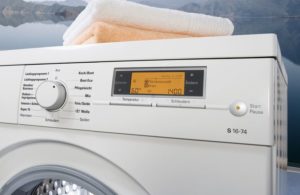 In our example, the number series is broken by the letter S. It indicates the type of platform on the basis of which a specific model is made. There are several platforms: A, E, S, F, T, and X. S stands for the new F20 platform.
In our example, the number series is broken by the letter S. It indicates the type of platform on the basis of which a specific model is made. There are several platforms: A, E, S, F, T, and X. S stands for the new F20 platform.
- A is the base platform of the FX 60 cm Entry.
- E is one of the oldest FV 60 cm base platforms.
- F - narrow platform SX 44 cm Entry.
- T - platform vertical PV.
- X - narrow advanced platform SV 44 cm.
The last three digits of the WM16S740 marking are no longer so interesting. They indicate to us the type of control of the washer and its design.
WLG2416MOE
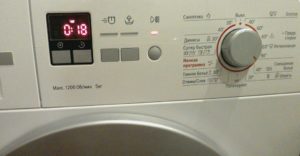 Another interesting example is the Bosch marking WLG2416MOE. Let's decrypt it. W - everyone understands that this is a washing machine. L - model with a narrow body. G - belonging to the old line of narrow cars. 24 - this is, you guessed it, the speed of the drum - 1200 rpm. Next, we have the number 1, which indicates not the design, but the generation of the control system.In this case, we are dealing with the younger (rather primitive) generation.
Another interesting example is the Bosch marking WLG2416MOE. Let's decrypt it. W - everyone understands that this is a washing machine. L - model with a narrow body. G - belonging to the old line of narrow cars. 24 - this is, you guessed it, the speed of the drum - 1200 rpm. Next, we have the number 1, which indicates not the design, but the generation of the control system.In this case, we are dealing with the younger (rather primitive) generation.
What's next? Next is the number 6. This number tells us the type of leakage protection. There are cars with full leakage protection, which is denoted by the number 4, in our case, partial protection - the number 6.
The numbers are over and we have three letters left. Let's start with the letter M. She tells us that the model has been modified. The last two letters are the manufacturer's index. OE - the car was made in Russia, Belarus or Ukraine.
WAS20443OE
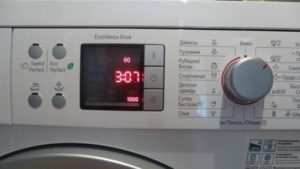 The full name of the model is Bosch Logixx 8 VarioPerfect WAS20443OE, but we are interested in the second alphanumeric part of the marking. A - the machine has front loading. The letter S identifies the belonging of the machine to premium technology with a load of up to 8 kg. 20 is the rotational speed of the drum, in this case 1000 rpm. Next, the number 4 indicates that the machine has a digital display.
The full name of the model is Bosch Logixx 8 VarioPerfect WAS20443OE, but we are interested in the second alphanumeric part of the marking. A - the machine has front loading. The letter S identifies the belonging of the machine to premium technology with a load of up to 8 kg. 20 is the rotational speed of the drum, in this case 1000 rpm. Next, the number 4 indicates that the machine has a digital display.
What's next, and then we have the number 4, which indicates that the machine has full protection against water leaks. The number 3 indicates the type of housing design. The two letters of the OE producer index remain, but we already know what they mean.
WAE24460OE
To consolidate the success, we decrypt another Bosch WAE24460OE marking. Now we can do it relatively easily. So let's get started. Bukovka A tells us that the hatch of this washing machine is not on top, but on the front - front loading. The next letter E tells us that this is not a simple freestanding machine, but a built-in one and you can even hang a door on it, since there are hinges on the front wall of the case.
Further, everything is simpler. 24 - means that the machine is capable of squeezing laundry at speeds up to 1200 rpm. 4 is the most complete protection against water leaks. 6 - a modern digital display. 0 - standard design. OE - made in the Russian Federation, Belarus, or in Ukraine.
That's the whole decryption. If you have good instructions, you can pretty quickly understand what the symbols mean in the marking of a specific Bosch washing machine. It remains to go to the store and get the best "home assistant". But keep in mind that buying a good car is only half the battle, you need to learn use Bosch washing machine, and this is a topic for a separate publication.
Interesting:
Reader Comments
- Share your opinion - leave a comment
Headings
Washing machine repair


For buyers
For users

Dishwasher

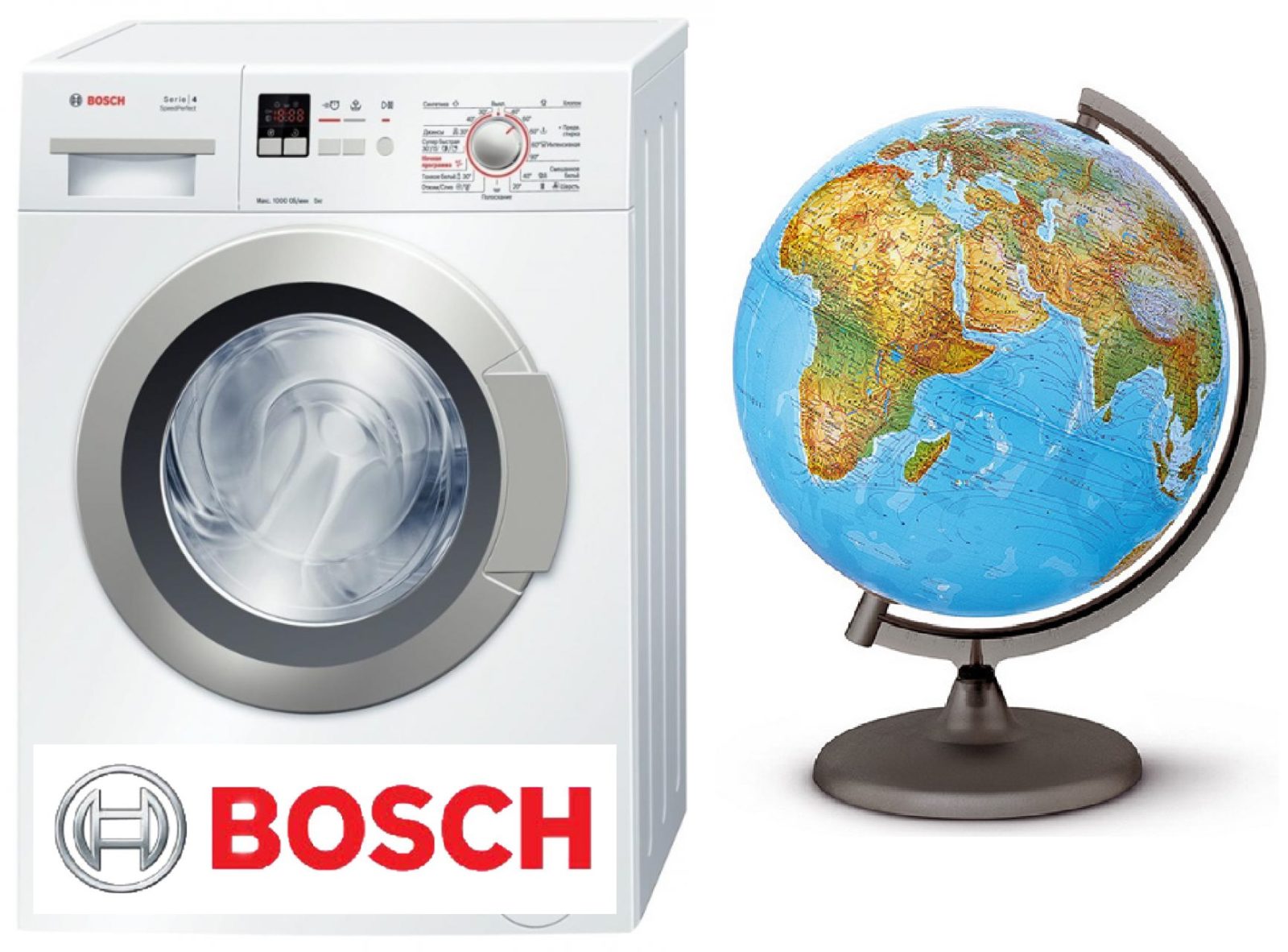
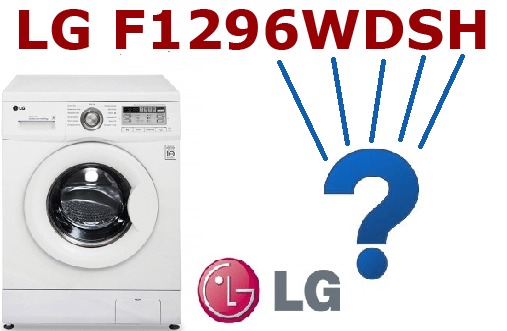

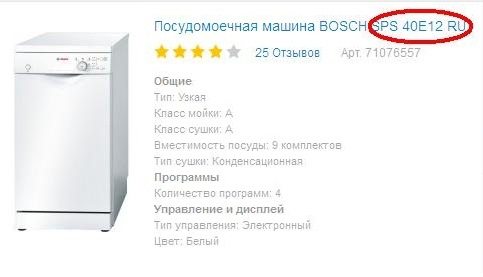
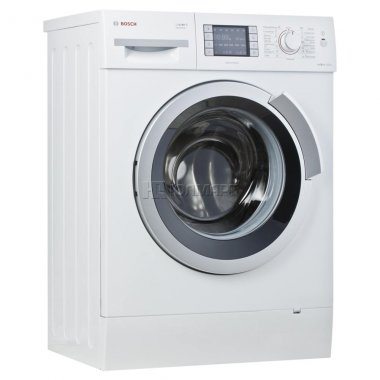
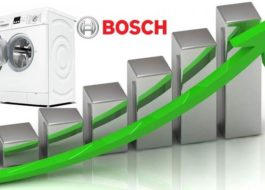











Add a comment